
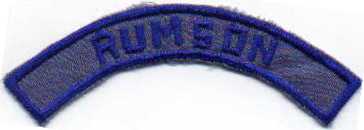
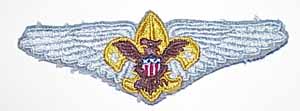 Air
Scouts (1941-1949)
Air
Scouts (1941-1949)
Overview
Air Scouts were established as an Air Force inspired program, much
in the same way that Sea Scouts is a Naval inspired program. As
it
was established during the war years when aviation was truly coming
into
its own, it was very successful. In September, 1949, with Senior
Scouts becoming Explorers, the Air
Scout
program became the Air Explorer
program.
Air Scout program
The basic Air Scout program had scouts learn about the world of
aeronautics,
as a pre-flight training program. This entailed them learning a
great
deal about flight, about how aircraft were built and operated, and how
to fly them, short of actually doing so. They learned about a
wide
range of topics relating to flying, including engines, weather, radio,
and more. The Army Air Corp and Navy helped out, considering we
were
involved in WWII at the time.
Air Scout Uniforms
Air Scouts and adult leaders wore uniforms of sky blue. Community
strips, state strips, and unit numbers were available in these colors
to
match. There are many pictures of Air Scouts in elaborate
uniforms
with blouse coats and the like, but these were apparently experimental
uniforms, and were not adopted as the official uniforms.


Air Scout Advancement
Program
There were actually two parts to the Air Scout advancement
program.
There was the main advancement used by Air Scouts themselves.
Inspired
by the four level Sea Scouts Advancement program, Air Scouts also had a
four level program of Apprentice, Observer, Craftsman, and Ace.
There
were also the Air Candidate awards.
These existed from 1941-48, and were intended for Tenderfoot, Second
Class,
and First Class Scouts in Boy Scout Troops to earn. The idea to
get
these boys interested in Air Scouting, so that they might participate
when
they turned 15.
At first the Air Scout advancement program was fairly tough. To see those requirements, go here. Later in January of 1947, the Air Scout advancement program was revamped, and Specialist Badges (also called Ratings strips) were introduced. Under the new scheme, general Air Scout accomplishments was recognized by advancement in rank, while specialized aviation knowledge was recognized by advancement in the ratings. This lead to an increase in the numbers of awards given out. This was understandable, as the Ace Award was the hardest award to earn, having 130 requirements compared to 39 for the Ranger Award or 75 for Quartermaster. Requirements were reduced to 45. This is also seen by the fact that it was three years before anyone earned Ace! The success of the ratings strips would lead to them being added to the revised Explorer advancement program of the 50s, but here the earning of Ratings was necessary to advance in rank. These new requirements were optional for 1947, becoming manditory in 1948.
If its not clear from the below chart, Air Scouts earned the
Specialist
Badges (Ratings) by completing 5 of the 6 requirements and taking part
in service, outdoor, and social activities, and had to earn the Ratings
in order. So an Air Scout would have to advance from Observer
Airman
Rating to Craftsman Airman Rating to Ace Airman Rating. In
earning
the ranks, they completed 14 requirements from 9 groups, and at least
one
from each group. The six Ratings where included in these 9
groups.
But they did not have to complete the Ratings, just complete at least
one
requirement from each.
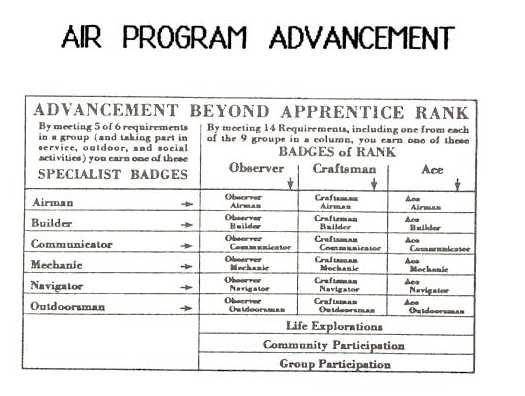
For the new advancement requirements after 1947, both rank and ratings,
go HERE.
In addition to this, National also took the Aviation Merit Badge and in 1941, split it into 4 merit badges: Aerodynamics, Aeronautics, Airplane Design, and Airplane Structure. These lasted until 1952, when Aviation was brought back. Earning of these 4 merit badges was necessary for the Air Scout Candidate Awards and for the earlier Air Scout Advancement program. With the revamped requirments that came out in 1947, it was no longer necessary for Air Scouts to earn these 4 merit badges. These merit badges were all embroidered with a blue background. There was also a sky blue merit badge sash made for the Air Scouts.
There exist a set of three Air Scout/Air Explorer advancement awards
without lettering. It is debated when and why these were put
out.
Some say they were released in the late 40s before Air Scouts became
Air
Explorers, others say they were released before the Air Explorers
switched
to using the Explorer Silver award program. I am listing them
here,
instead.
 Tenderfoot Tenderfoot |
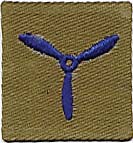 Second
Class Second
Class |
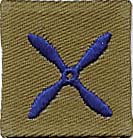 First
Class First
Class |
 Air
Scout Apprentice Air
Scout Apprentice |
 Air
Scout Observer Air
Scout Observer |
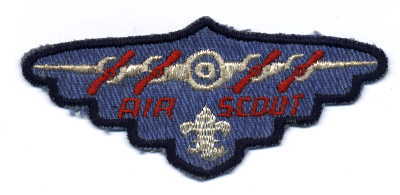 Air
Scout Ace Air
Scout Ace |
| Air Scout Apprentice NO PICTURE | Air Scout Observer NO PICTURE |
| Air Scout Craftsman NO PICTURE |
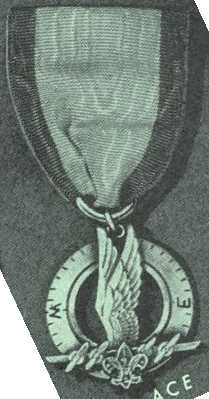 |
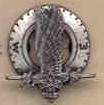  Air
Scout Ace Knot Air
Scout Ace Knot |
| Ace Builder | ||
 Craftsman
Mechanic Craftsman
Mechanic |
||
 Ace
Navigator Ace
Navigator |
||
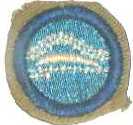 Aerodynamics Aerodynamics |
 Aeronautics Aeronautics |
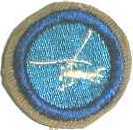 Airplane
Design Airplane
Design |
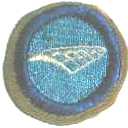 Airplane
Structure Airplane
Structure |
Air Scout Unit Organization
Air Scout Units were called Squadrons. These were subdivided
into smaller groups called Flights. In 1946, offices and unit terms
were
renamed to bring everything in line with other Senior Scouting
units.
Flights were renamed Crews, so that all Senior Scout units had the same
subdivisions. Squadrons were now lead by Senior Crew Leaders and
Squadron Advisors. Many Squadrons, however, continued to use the
old terminology. To better understand the terms used, here is a
comparison
with Boy Scout Troops and Explorer Posts.
| Boy Scout Troop | Explorer Post | Air Scout Squadron |
| Scoutmaster | Post Advisor | Squadron Leader, later Squadron Advisor |
| Senior Patrol Leader | Senior Crew Leader | Squadron Pilot, later Senior Crew Leader |
| Patrol | Crew | Flight, later Crew |
| Patrol Leader | Crew Leader | Flight Pilot, later Crew Leader |
| Scribe | Post Secretary | Squadron Secretary |
 Squadron
Leader Squadron
Leader |
 Assistant
Squadron Leader Assistant
Squadron Leader |
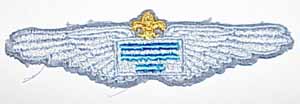 Squadron
Pilot Squadron
Pilot |
 Assistant
Squadron Pilot Assistant
Squadron Pilot |
 Flight
Pilot Flight
Pilot |
 Assistant
Flight Pilot Assistant
Flight Pilot |
| Secretary, NO PICTURE |
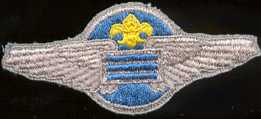 Squadron
Pilot Squadron
Pilot |
 Assistant
Squadron Pilot Assistant
Squadron Pilot |
 Secretary Secretary |
Literature
The basic manual for Air Scout was the Air Scout Manual, which
went through several printings in the first couple of years.
Interesting
enough, no more were printed after 1943! One would expect that
there
would still be the need for manuals for several years, and especially
after
the revised advancement program a revised manual would have been
produced.
What they did was drop in a short 16pg pamphlet called Air Scout
Advancement
Requirements (#3022) with the last printing, which gave the new
requirements.
The only manual for adult leaders was the Hints to Squadron Leaders, which would be later replaced by the more generic Hints for Senior Scout Leadership. Why nothing equivalent to a Scoutmaster Handbook was produced is unknown.
Various miscellaneous materials includes:
Air Scouting Development, 1941
Scouting and Aviation, 1941
Tentative Program Proposals, 1941
Air Scouting (pamphlet), #3472, 1942
Air Scouts, #3476, 1943
Air Scouts Contests, #4166
(if anyone has copies of these they'd like to share, it would be
appreciated)
| Air Scout Manual (#3648)
Proof 1942, Feb Proof 1942, Nov 1st 1942, Dec 2nd 1943, Jan 3rd 1943, Feb 4th 1943, Feb (442pg + viii preface) 25000243 5th 1943, Apr 442p 25000443 6th 1943, Oct 440p paperback, written by W.H. Hunt |
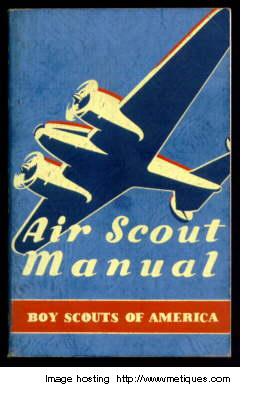 |
| Air Scout Merit Badge Pamphlets
Aerodynamics (#3280) 1942, July 1943, Feb 1943, Dec Aeronautics (#3306) 1942, July 1943, Feb 1944, May Airplane Design (#3281) 1942, Aug 1942, Dec 1943, Feb 1944, March Airplane Structure (#3279) 1942, July 1942, Dec 1943, Feb paperback, written by W.H. Hunt |
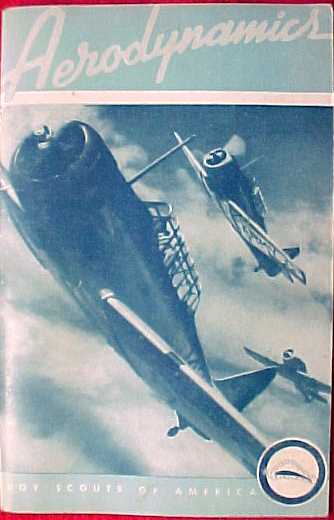  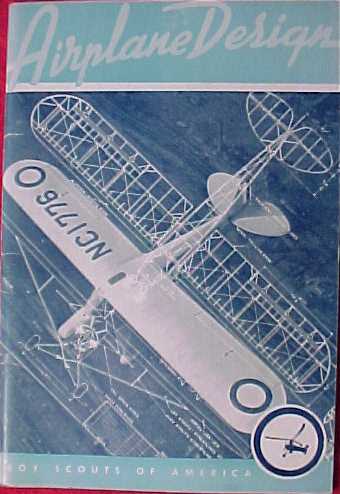  |
| Senior Scouting Program Notebook
1943 (shown) 1944 1945 (shown) 1946 (shown) 128pg 10000 1946-47 (shown) 128pg 10000 1947-48 1948-49 (shown) 1949-50 (shown) |
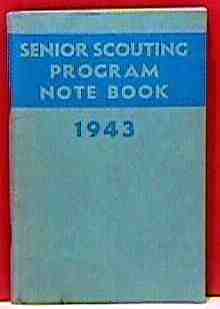  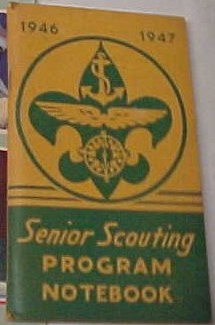 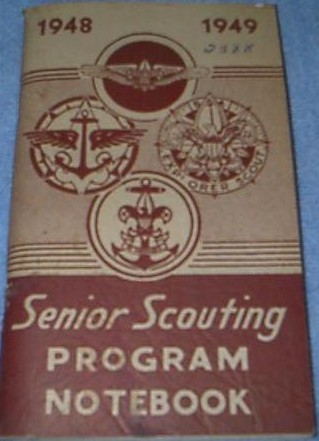 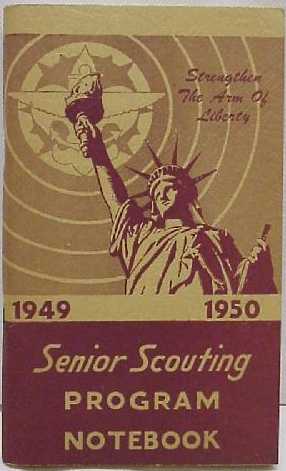 |
| Hints to Squadron Leaders (#3195)
1st 1942 65pg 2nd 1943 119pg 10M343 |
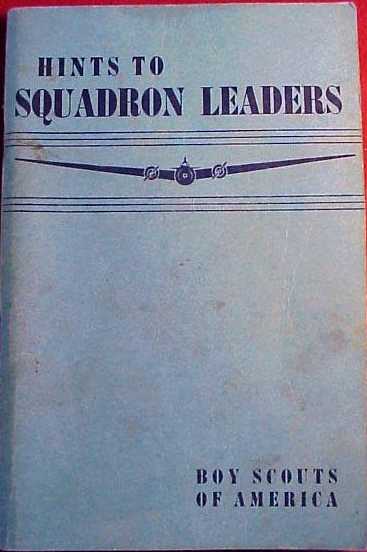 |
| Hints on Senior Scout Leadership
1st 1947 15000647 2nd 1948 3rd 1949 booklet, 94pg |
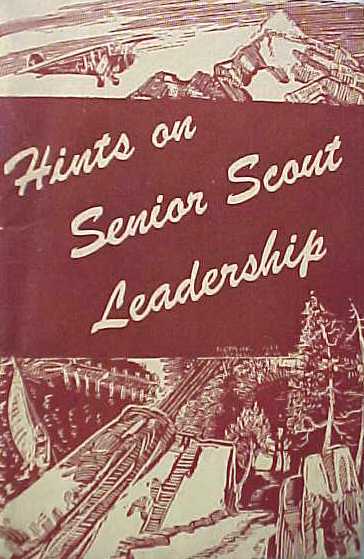 |
| Miscellanous Air Scout Manuals
Air Scouting Development, 1941 Scouting and Aviation, 1941 Tentative Program Proposals, 1941 Air Scouting (pamphlet), #3472, 1942 Air Scouts, #3476, 1943 (shown) Air Scouts Contests, #4166 Air Scout Advancement Requirements, #3022, 1946 Air Scout Leaders' Training Course Notebook (#4163) Air Scout Leader's Training Course Guidebook (#4164) |
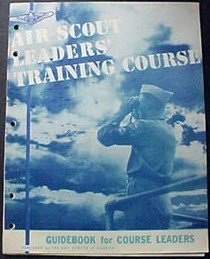 |
| year | membership | units | ace awards |
| 1942 | 2025 | ? | 0 |
| 1943 | 9549 | ? | 0 |
| 1944 | 11233 | ? | 0 |
| 1945 | 7856 | ? | 5 |
| 1946 | 7656 | ? | 23 |
| 1947 | 8539 | ? | 81 |
| 1948 | 6809 | ? | 95 |
| 1949 | 6055 | ? | 150 |
Statistics taken from BSA Annual Reports as given in Art Hyman's The Scout in Aviation
Updated: 08/30/2004mrb